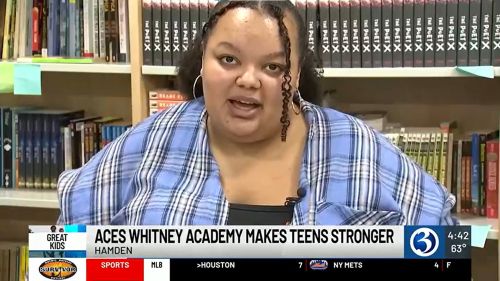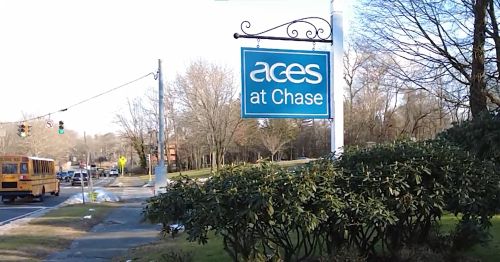-
Our Agency
- About Us
- Calendars
- Contact Us
-
Directions
- ACCESS
- ACES at Chase
- ACES International Preschool and Childcare Center
- ACES Transportation Services
- Center for Autism Spectrum and Developmental Disorders
- Central Office
- Educational Center for the Arts
- Educational Technology
- Little Theatre on Lincoln Street
- Mill Road School
- Network Services
- Staff Development / Administration
- Village School
- Whitney High School North
- Wintergreen Interdistrict Magnet School
- Human Capital Development
- Education Foundation
- News / Press
- Publications
- Request for Proposals
- Employment
- Events & Workshops
- Referrals
-
Schools & Programs
-
Special Education Schools
- Center for Autism Spectrum and Developmental Disorders
- Mead Elementary School
- Mill Road School
- Village School
- Whitney Academy EXPLORE & CREATE
- Whitney High School North
-
Magnet Schools
-
ACES at Chase
- About Us
- ACES at Chase: History & Origins
- Admissions
-
Student and Family Portal
- Breakfast and Lunch Menus
- Cancellations, Delays, and Early Dismissal
- Community Health Center
- Dress Guidelines
- Family Teacher Organization (FTO)
- Health Office
- Principal's Corner
- Monitoring Grades: PowerSchool Parent Portal
- Quick Links
- Student Handbook
- Summer Reading and Math
- Technology & Digital Citizenship
- Virtual Suggestion Box
- Document Library
- Contact Us
- Back to ACES
- Educational Center for the Arts
- Wintergreen Interdistrict Magnet School
-
ACES at Chase
- Alternative Education
- ACES Early Head Start
- ACES International
-
ACES International Preschool and Childcare Center
- About Us
- ACES International Preschool and Childcare Center Donations
- Admission Interest
- Meet the Staff - Newtown Center
- Meet the Staff - Woodbury Center
- Calendar
- Contact Us - Newtown Center
- Contact Us - Woodbury Center
- Family Portal
- Enroll Now: ACES International Preschool and Childcare Center Newtown Location
- Back to ACES
- ACES Open Choice
- Family and Community Engagement
- Magnet School Parent Choice
- School-Based Services
-
Special Education Schools
-
Services
- ACCESS Adult Vocational Services
- ACES Insurance Collaborative
- ACES UP Renewable Energy Solutions
- Alternate Routes to Certification
- Business Partnership Opportunities
- Center for Safe Schools
- Clinical Services
- Educational Technology
- Facility Rental
- Fingerprinting
- International Programming
- Marketing and Communications Services
- Network Services
- Professional Learning
- Regional Education Councils
- Regional Special Education Transportation
- Speech and Language Services
- Transportation
- World Language Services
- Find
« Back to News List
« Back to News List
Reflecting diversity: Choice schools in city more aligned to demographics
April 11th, 2014
Connecticut Voices for Children, a research and advocacy group, found overall that choice schools—including charter, magnet, and vocational-technical schools—“enrolled a more economically, linguistically, and ability-advantaged student body than the local public schools of the towns in which they’re located,” the report reads.
Robert Cotto, a consultant for Connecticut Voices for Children, said when the study began in early 2013, data from the 2011-12 school year was the most recent available. Researchers from the nonprofit used the data to look specifically at comparisons between the choice schools and their home district for percentages of non-white students, enrollment of lower income students qualifying for free and reduced price meals, enrollment of emerging bilingual students and enrollment of special education students.
There are 1,134 public schools in the state, 115 of which are choice schools. Overall, 70 percent of students at magnet schools are minority, 55 percent are eligible for free and reduced meals, 5 percent are English Language Learners and 9 percent are students in special education classes.
Statewide, 47 percent of students at technical schools are minority, 41 percent are eligible for free and reduced price meals, 3 percent are English Language Learners and 7 percent are students in special education classes.
At public schools in general, 39 percent of students are minority; 35 percent are eligible for free or reduced price meals; 6 percent are English Language Learners; and 12 percent are students in special education.
Based on the statistics, magnet and technical schools in general are more likely to enroll minority students and more likely to enroll students eligible for free or reduced price meal programs.
The report, however, painted a different picture for Meriden, where schools were less likely to enroll minority and lower income students.
According to 2011-12 school year data, 60 percent of students at Edison identified as minorities, and 36 percent were eligible for free or reduced price meal programs. At Wilcox, 37 percent identified as minorities, and 33 percent were eligible for free or reduced price lunch. City-wide, those students made up 65 percent and 67 percent of the population, respectively.
Since the years used in the research, however, both Edison and Wilcox have made gains in matching their demographics to those of public schools in Meriden.
At the end of last month, 61 percent of students at Edison were receiving free or reduced price lunch, and roughly 66 percent were minority students. At Wilcox, 65 percent of students are minorities, and Principal Lisa Hylwa said the percentage of students receiving free or reduced price lunch is roughly the average of percentages in Meriden and Wallingford — putting it around 43 percent. The updated figures more closely reflect trends city-wide, where 65 percent of students are minority, and 70 percent of students receive free or reduced price meals.
Hylwa said, however, there’s “really no demographic trick,” to the fluctuating population at her school.
“Just about every technical high school has the unintentional mathematic ratio to the student population from the main towns they pull from,” Hylwa said. The majority of Wilcox students come from Berlin, Cheshire, Meriden, Southington and Wallingford.
Similarly, Edison Principal Karen Habegger said, “We accept the students who have applied to the lottery. There’s really no way to determine beforehand a student’s racial or socioeconomic status, because that’s not part of the application.”
While technical and magnet schools are subject to their applicant pools, Cotto said those schools throughout the state should be doing more to recruit students from more diverse towns.
“The state provides extra funding for transportation so you can attract students outside the district. If schools aren’t doing that, then they’re not doing a good enough of recruiting students,” Cotto said.
“We’ve run a full campaign to recruit from all of the ACES districts,” Habegger said, which includes 26 school districts in south-central Connecticut. “We’ve definitely been focused on recruiting.”












